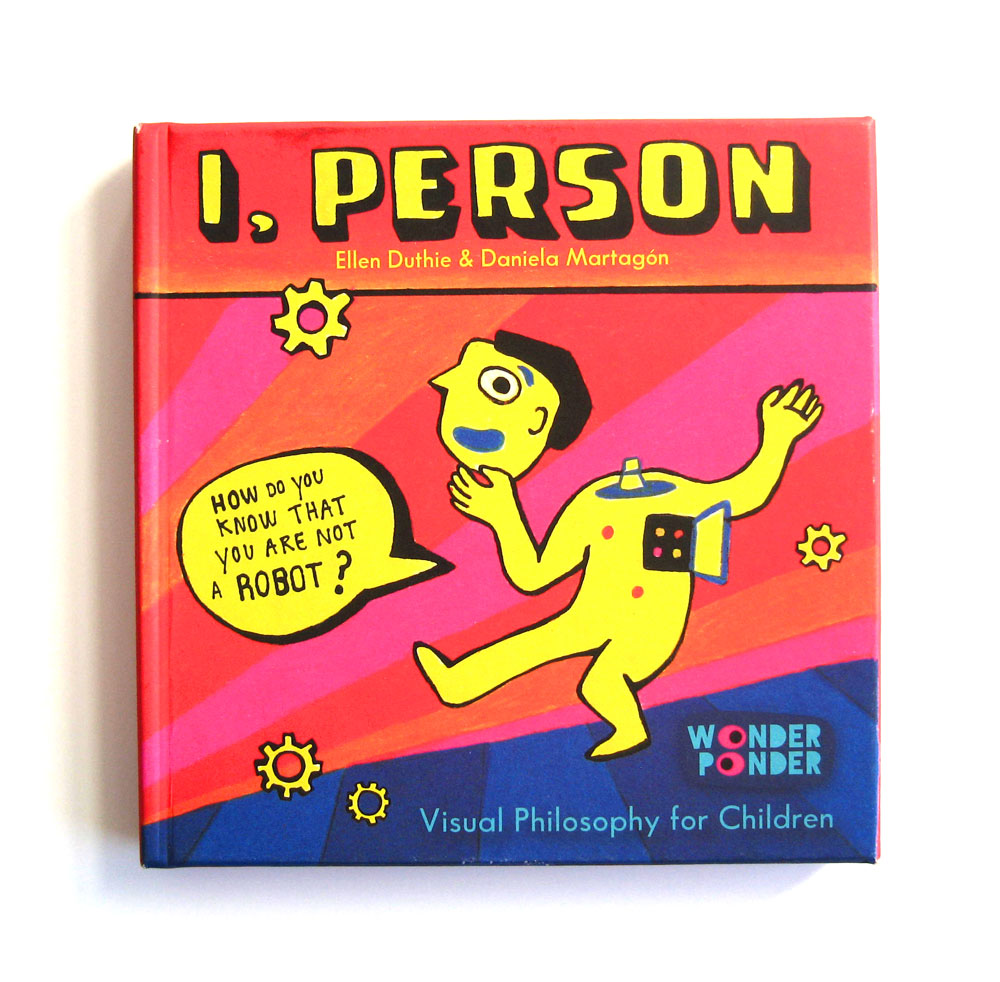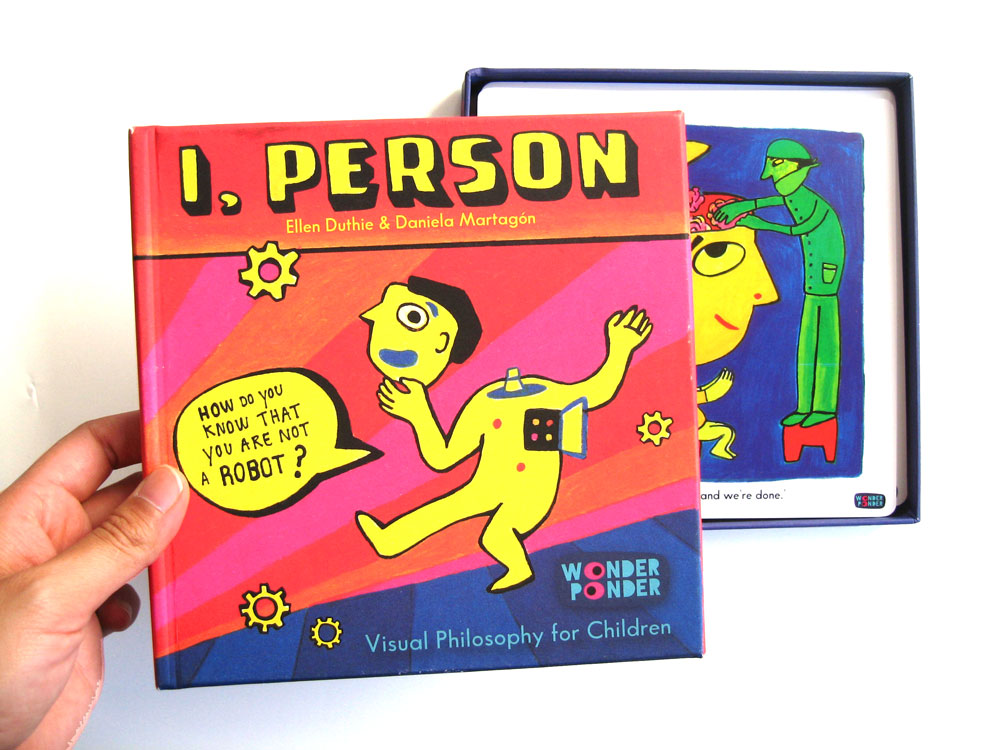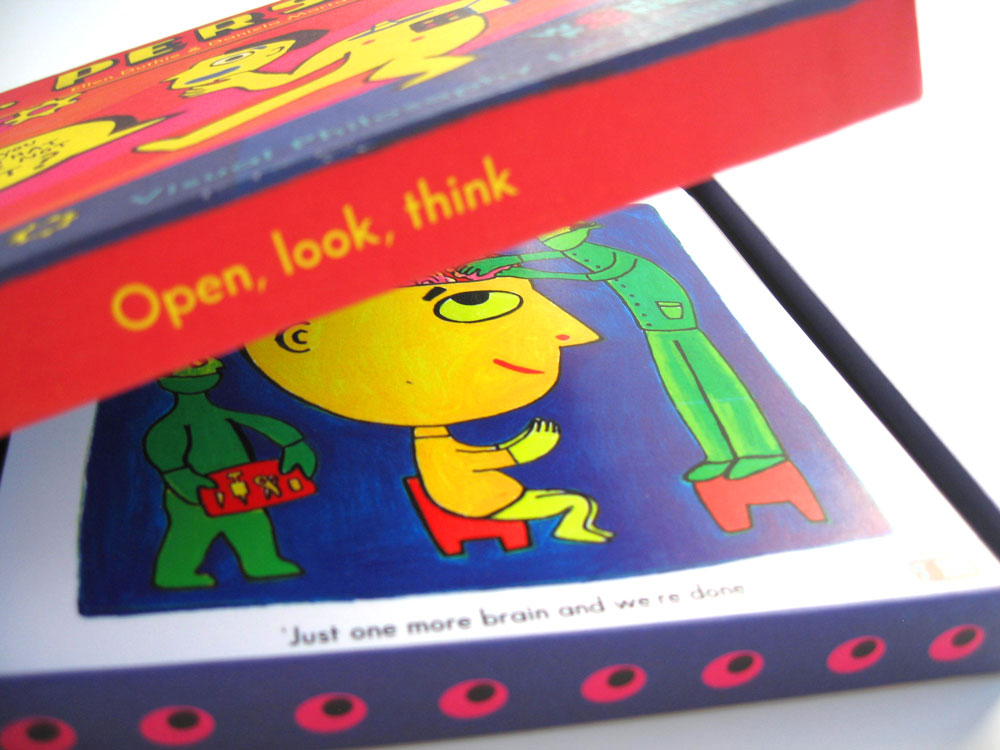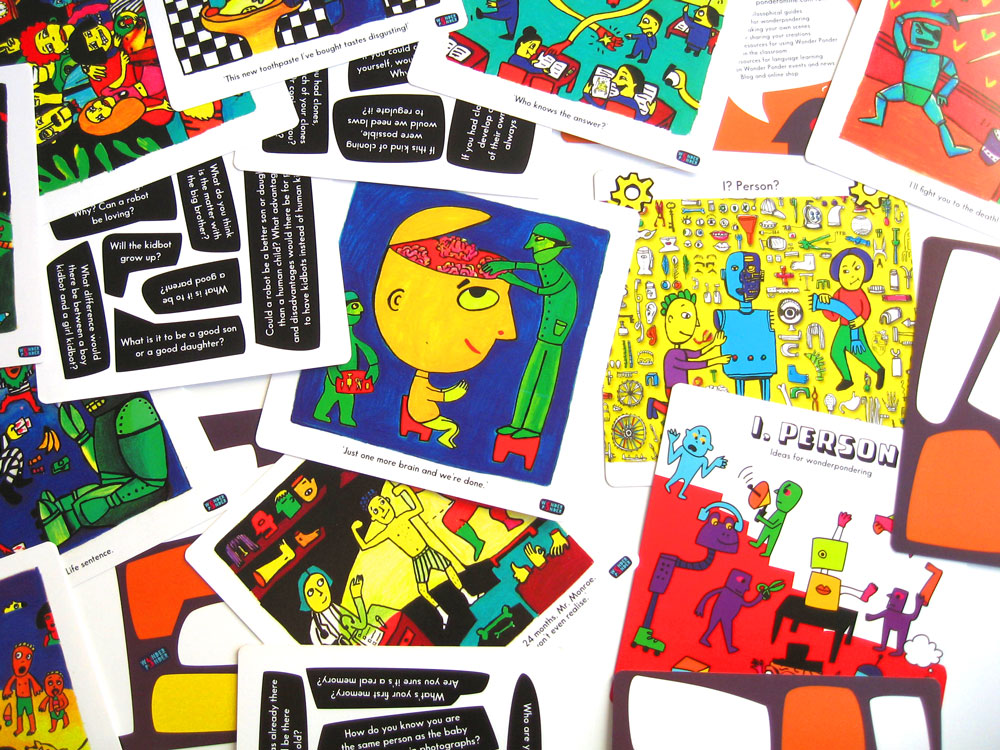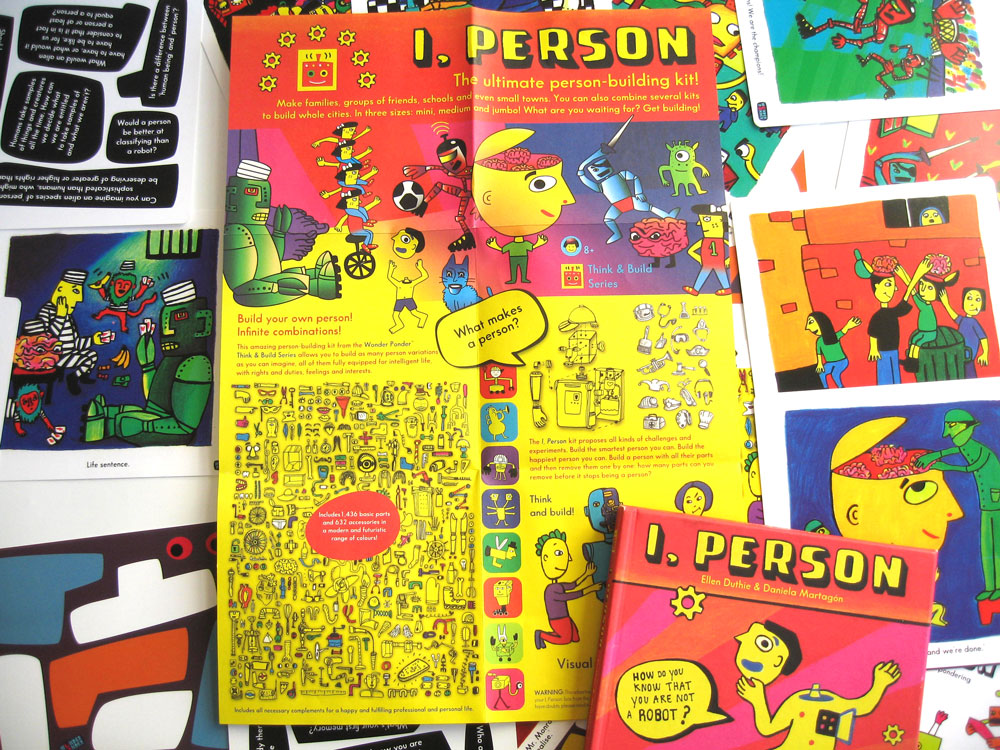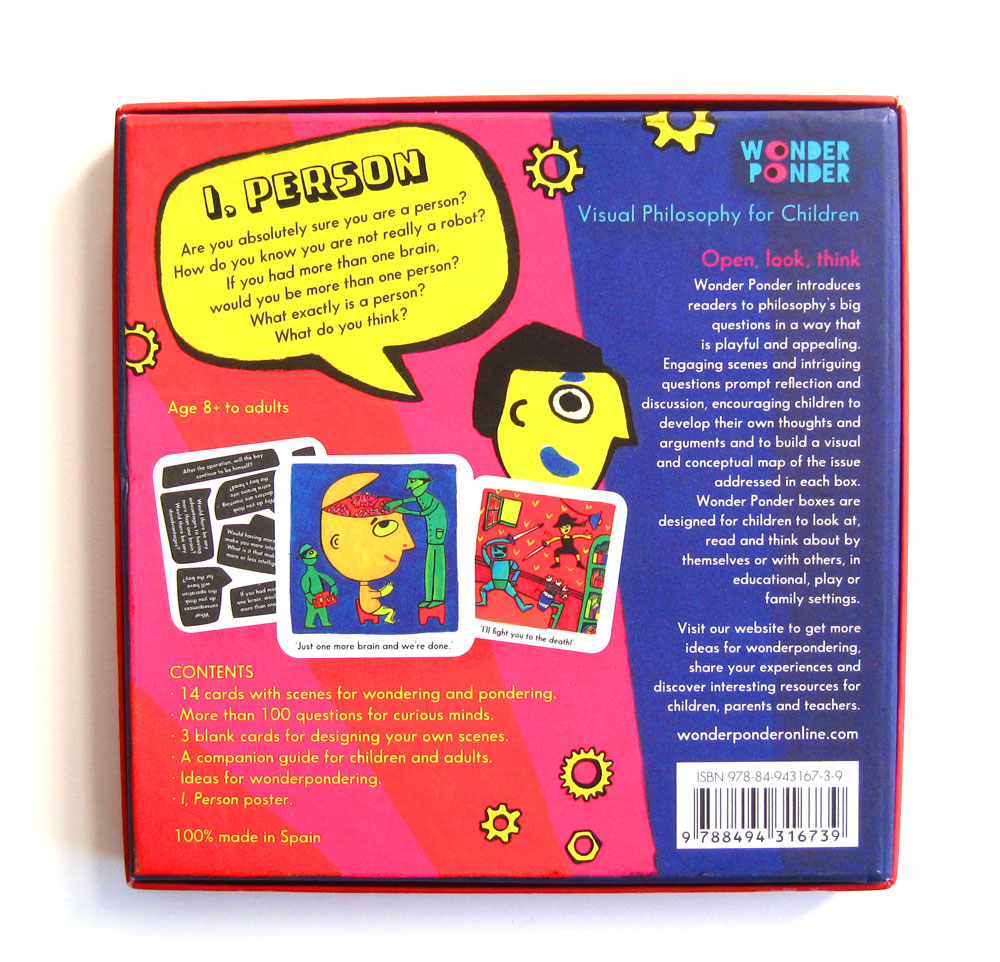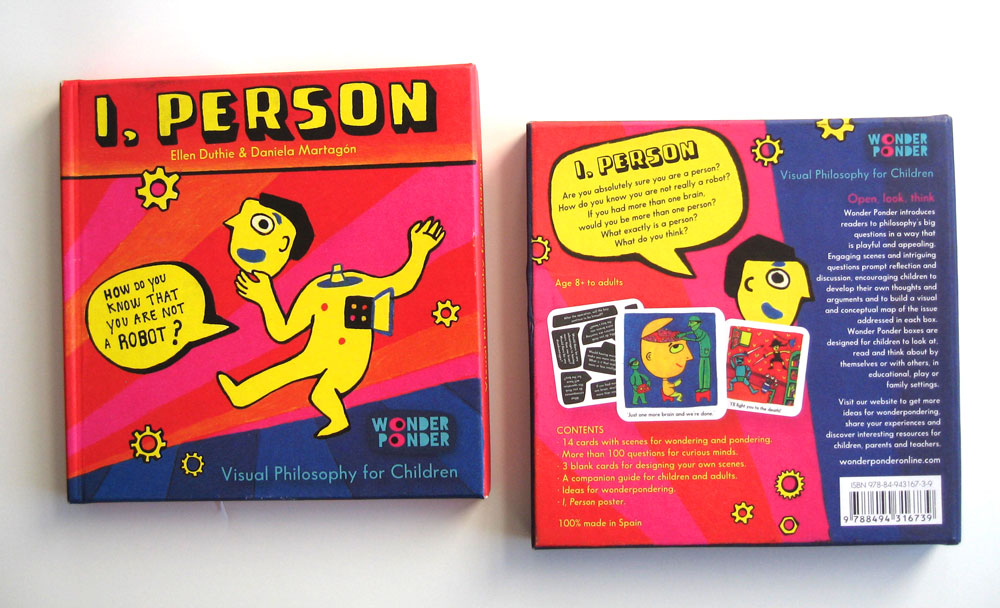Should robots be allowed to adopt humans?
Ellen Duthie
So you think your family is human? Are you absolutely sure? Think about it...
I, Person, the second title in the Visual Philosophy Children series by Wonder Ponder invites readers to explore two BIG questions: Who am I? and What am I?
This video shows the making of the followng scene in the I, Person box:
One of the fourteen scenes contained in I, Person, the second title in the Visual Philosophy for Children series by Wonder Ponder, desgined to invite readers to wonder and ponder about who they are and what they are.
In the video, illustrator Daniela Martagón shares the different stages in the sketches, composition and colour of the scene, and in this blog post, she has also wanted to share her 'private script' for the scene, the story she imagined behind the scene:
When a refined English robot from the turn of the 20th century tires of its solitude, it decides to adopt a robot cat in the 20s. For a few decades they live happily in each other's company, but in the 60s they decide they could do with a bit of a romantic, youthful, and dreamy spirit around the house, and they adopt a teenage hippy robot daughter. The charm lasts for a couple of decades, but they soon start to feel the need a mother's touch, so they adopt an 80s robot mother. Towards the end of the 90s, the try to bring some balance to the family with an athletic university student robot son. The family is almost complete. But with the arrival of the 21st century they have a wild idea. Wouldn't it be exciting to have something live? Something different, distingushed, like an Afghan dog. Not bad at all. Nice and obedient.
But there is still something missing from their family. The latest fashion, truly unique and original: a small human child. Yes, a real child.
Find out more about I, Person here.
ABOUT THE WONDER PONDER VISUAL PHILOSOPHY FOR CHILDREN SERIES
Wonder Ponder introduces readers to philosophy's big questions in a way that is playful and appealing. Engaging scenes and intriguing questions prompt reflection and discussion, encouraging children to develop their own thoughts and arguments and to build a visual and conceptual map of the issue addressed in each box.
Wonder Ponder boxes are designed for children to look at, read and think about by themselves and with others, in educational, play or family settings.

